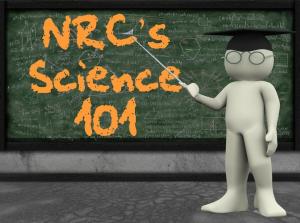 The primary active ingredient in nuclear reactor fuel is a particular variety, or “isotope,” of uranium, called U235. U235 is relatively rare — only about 0.7% of uranium as it exists in nature is U235. Uranium must be enriched to contain about 5% U235 to function properly as fuel for a U.S. commercial nuclear power plant.
The primary active ingredient in nuclear reactor fuel is a particular variety, or “isotope,” of uranium, called U235. U235 is relatively rare — only about 0.7% of uranium as it exists in nature is U235. Uranium must be enriched to contain about 5% U235 to function properly as fuel for a U.S. commercial nuclear power plant.
U235 has 92 protons and 143 neutrons. Protons and neutrons are some of the almost unimaginably tiny particles that make up the nucleus of an atom — see Science 101 Blog #1. All other isotopes of uranium also have 92 protons, but different isotopes have slightly different numbers of neutrons.
Uranium is a radioactive element. Uranium atoms break apart, or disintegrate, into smaller atoms, releasing energy and a few leftover neutrons in the process. This happens very slowly for U235. If you have some U235 today, in about 700 million years you will have only half as much. You will have the remaining U235, plus the smaller atoms. The energy released will have gone into the environment too slowly to be noticed, and the extra neutrons will have been absorbed by other atoms.
While this happens very slowly, the disintegration of each individual atom happens very quickly, and the fragments are ejected at a very high speed. Those high-speed fragments are the source of the heat generated by the reactor. Under the right man-made conditions, the number of U235 atoms that disintegrate each second can be increased.
When a U235 atom disintegrates, it releases some neutrons. Some of those neutrons can be made to interact with other U235 atoms, causing them to disintegrate as well. Those “target” atoms release more neutrons when they disintegrate, and then those neutrons interact with still other U235 atoms, and so on. This is called a “chain reaction.” This process does not work well for other isotopes of uranium, which is why the uranium needs to be enriched in U235 for use as nuclear fuel.
Most of the energy released when a U235 atom disintegrates is in the form of kinetic energy — the energy of physical motion. The fragments of the disintegrated atom collide with nearby atoms and set them vibrating. That vibration constitutes heat. The fuel rods get hot as the reaction progresses. The faster the chain reaction — that is, the larger the number of U235 atoms that disintegrate each second — the faster energy is released and the hotter the fuel rods become.
The uranium in a U.S. commercial nuclear reactor is thoroughly mixed with neutral material and formed into pellets about half inch wide and three-quarters of an inch long. The pellets are stacked tightly in metal tubes, forming “fuel rods” that are several feet long. Each fuel rod is just wide enough to hold a single column of pellets. The fuel rods are sealed, to keep all of the radioactive materials inside. There are thousands of these fuel rods in a typical reactor. They contain around 60 tons of uranium – but only about three tons are U235. (The majority of the uranium in the reactor is in the form of the most abundant naturally occurring isotope of uranium, U238, which cannot sustain the fission process without the help of an elevated concentration of the isotope U235.)
The people in charge of the reactor can control the chain reaction by preventing some or all of the released neutrons from interacting with U235 atoms. The physical arrangement of the fuel rods, the low U235 concentration, and other design factors, also limit the number of neutrons that can interact with U235 atoms.
The heat generated by the chain reaction is used to make steam, and that steam powers specialized machinery that drives an electrical generator, generating electricity. Science 101 will look at how that works in more detail in a later issue.
The author has a BS in Electrical Engineering from Carnegie-Mellon University.
Filed under: Science 101 Tagged: atoms, basic science, NRC, nuclear chain reaction, nuclear power



















